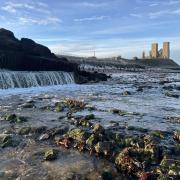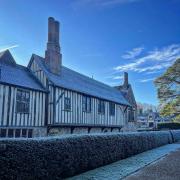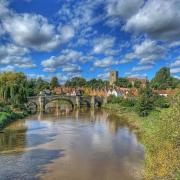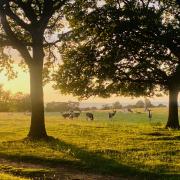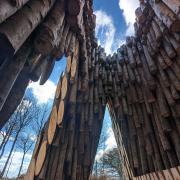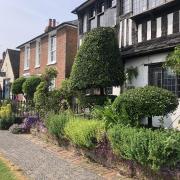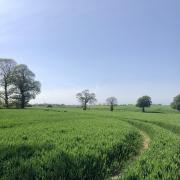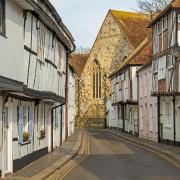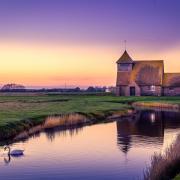The distinctive landscapes of the North Kent Downs, with its walks, cycle and equestrian rides, is captured in a new photobook
The Kent Downs are part of the chalk ridge of the North Downs that runs east-west from the south-east tip of England at Dover to Farnham in Surrey. Our famous White Cliffs are the exposed bedrock of this ridge, plunging 250 feet from the grassy tops to the sea.
In Kent the North Downs stretch the width of the county, cut only by the river valleys of the Great Stour at Wye, the Medway at Maidstone and the Darent at Sevenoaks. If you drive along the M20 and M25 in Kent, you are following the base of the steep scarp slope which separates the lower-lying Weald from the north.
Ramblers can traverse the entire length of the Downs on the North Downs Way, and the Pilgrims’ Way long-distance routes, and there are many bridal paths for cyclists and equestrians as well.
At the top of the ridge is a landscape of open grassland with fantastic views across Kent towards the sea, alternating with native, often ancient, deciduous woodland.
These Downs habitats are unique to England and increasingly rare, so the National Trust and local Wildlife Trusts have set up reserves to protect and restore the native flora and fauna.
As well as being a delight to walk upon, chalk grasslands are a rare and interesting habitat which is particularly rich in species. This variety isn’t always obvious as many of the plants are quite small, but from May onwards if you look at the ground around you, what you will see can be quite lovely.
In spring there are likely to be cowslips, often in great numbers, and pretty yellow rock roses. With the summer come scented swathes of wild marjoram and thyme, often interspersed with the bright yellow birdsfoot trefoil, oxeye daisies, clover and thistles and many other species. On a sunny day, you will also see the scarlet pimpernel, the small five-petalled red flower whose name was adopted for the hero in A Tale of Two Cities by local author Charles Dickens, who lived much of his life near Rochester and walked these hills.
Around 30 of the 50 species of British orchid can be found growing on the chalk downs, and rare species can be found in several Kent grasslands.
These include the late spider orchid, which grows on the Folkestone Downs but nowhere else in Britain.
The more common species like the early purple orchid, common-spotted orchid or fragrant orchid often grow in great swathes across the chalk slopes.
These flowers all need to be pollinated, so bees and butterflies abound on the chalk grasslands. In fact, almost half of the species of British butterfly occur on chalk grassland.
Most of the specialists are small, but can be very beautiful, such as the iridescent Green Hairstreak, the turquoise Adonis Blue, the Chalkhill Blue and the fast flying Dark Green Fritillary, which isn’t dark green at all, but chequered orange – and the black and white Marbled White.
Chalk grassland needs to be managed, otherwise it is invaded by spiny bushes such as hawthorn, blackthorn, bramble and dog rose. These not only make it difficult to roam, but they result in the loss of grassland plants because of shading and leaf drop.
The traditional method of managing chalk grassland was by grazing. Today, cattle are often used to keep the scrub at bay as they graze less close to the ground than sheep, allowing the small flowering plants to survive.
Such grazing is done by the National Trust at the White Cliffs of Dover reserve, the Wye Downs National Nature Reserve and also by the White Cliffs Countryside Partnership at Folkestone Warren. This combined effort has resulted in the return of the late spider orchid.
One of the great joys and privileges of researching my recent photo book about the Downs has been to stroll or sit atop the Kent Downs, surrounded by colourful wildflowers and dancing butterflies with the Weald stretching out before me.
Most such places are accessible by footpaths, and many have car parks nearby, and at this time of year they are really worth the effort.
If you do go, have a wonderful time, but please tread carefully and remember to leave no trace of your visit.
Find out more
Doug Kennedy is author of North Downs Landscapes: Exploring the Glorious English Countryside on London’s Doorstep, a beautifully produced photobook illustrating the beauty and distinctive landscapes of the Downs.
With accompanying text exploring the history, geography, geology and ecology of the countryside and some of its towns and villages, it captures the character and atmosphere of a special part of the British Isles.
The book is available to purchase now from www.oxbowbooks.com or by phoning 01865 241249. Kent Life readers can buy the book at a special 20 per cent a discounted price by quoting the code KLND15 when placing orders (rrp £14.99).
n








